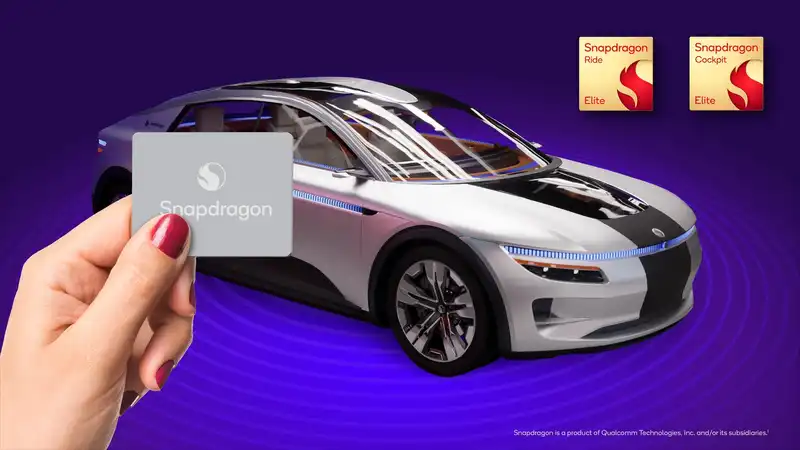Qualcomm today (October 22) announced two new in-car chips, Snapdragon Cockpit Elite and Snapdragon Ride Elite. The former, a system-on-chip, controls the digital experience in the car and is intended for functions that would be found in a connected vehicle, such as climate control, infotainment, and navigation. Snapdragon Ride Elite, on the other hand, is designed to support autonomous driving. Although these two chips are separate, Qualcomm is building them so that automakers can integrate them into a single system-on-chip.
Like the Snapdragon 8 Elite mobile processor announced for smartphones earlier this week, both the Cockpit Elite and Ride Elite chipsets use Qualcomm's bespoke Oryon CPU. The result should be a three-fold improvement in performance over the previous generation of Qualcomm's in-car chips. The increased performance means that the user will be able to stream music in the car, run navigation software, and operate a hands-free automobile all at once without any performance loss.
The Hexagon neural processing unit in Qualcomm's in-car chips has also been enhanced and is 12 times faster than the previous generation, Qualcomm said. This will enable more personalized assistance for both driver and passengers, and AI functions will be able to perform tasks such as managing climate control and detecting parking locations based on preferences.
Ultimately, many of the neural engine features will be specifically directed toward supporting autonomous driving with the Snapdragon Ride Elite chip. These features include real-time driver monitoring and enhanced object detection.
The Oryon CPU and improved neural engine are highlights of the changes in Snapdragon's new Elite chip for automotive applications, but the improvements do not stop there. The chipset benefits from an enhanced image signal processor that promises better visuals even in bad weather; 40 multimodal sensors and 20 high-resolution camera sensors allow for 360-degree monitoring, including inside the vehicle.
According to Qualcomm, the chip is configurable by automakers for use in different tiers of vehicles. According to Qualcomm, this flexible architecture should also speed the speed of deployment, allowing us to enjoy new innovations in vehicles faster than ever before.
We will have to wait until we can experience vehicles that benefit from the improvements in the Snapdragon Cockpit Elite and Ride Elite chips. Qualcomm plans to sample the chips in 2025.
I will be attending the Snapdragon Summit this week as a guest of Qualcomm and look forward to the hands-on opportunity to show drivers and passengers the benefits of the new Snapdragon Cockpit Elite and Ride Elite chips. For additional updates, see Tom's Guide.










Comments